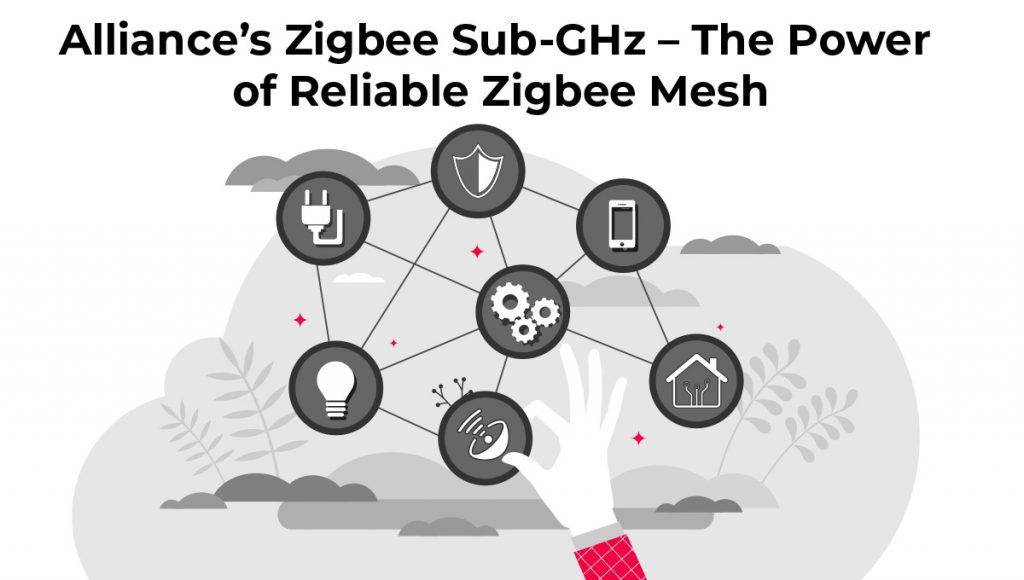
The Zigbee Alliance, the foundation and future of the IoT, is on a mission to create and evolve universal open standards for IoT products, transforming the way we live, work, and play. True to its objectives, the Alliance continues to work on new technologies to address a myriad of IoT challenges. One of these technologies is Zigbee Sub-GHz, which combines the proven, secure, reliable low-power Zigbee mesh operating on a low frequency band.
The Alliance’s Zigbee Sub-GHz technology delivers a number of advantages over common Sub-GHz technologies, such extended range, reliability, low power, and an open non-proprietary solution.
Extended Range
Consumers are expanding their knowledge of the “smart home” and with that comes an expansion into other applications, such as outdoor living spaces, external equipment control (solar panels), etc. Furthermore, older buildings have more obstacles such as thicker walls, which is problematic for higher frequency devices. Sub-GHz devices can deliver substantially improved range while passing through walls and bending around obstacles more efficiently. The greater transmission range makes Sub-GHz an excellent choice for use in large buildings, security applications, smart grids, and smart cities.
Redundancy and Reliability of Mesh
Mesh networking brings stability, long range, and fail-safe operation to IoT networks. The mesh provides multiple routes through the network, in case anything should happen. With a mesh network, you can extend the range by simply adding more nodes to the network. Mesh adds resiliency to the network, allowing it to self-recover from failure and self-heal.
Low Power
Battery life is a real challenge in home security and other scenarios where additional battery backups are needed throughout the network. Running at a lower frequency band provides longer range while requiring less power. This, combined with reduced retries, gives the Sub-GHz network an extended battery life.
Open Standards
Open, non-proprietary solutions, such as the Alliance’s Zigbee Sub-GHz solution, offer lower cost with ecosystem balance, interoperability, and flexibility in hardware use. Many member companies are actively contributing to this new open standard being developed by DSR Corporation, Exegin Technologies and Texas Instruments with support from Landys+Gyr, Microchip, Silicon Labs, Somfy, and Xylem.
With these and many other benefits, Sub-GHz delivers a reliable, ultra low-power, cost-effective option for large mesh networks that require extended range, improved in-building penetration and long battery life. To see Zigbee Sub-GHz in action, check out this video from one of the many exceptionally talented companies working this project: Zigbee Sub-GHz demo from Embedded World 2021.
The Zigbee certified Sub-GHz standard is currently under development and is slated to be released later this year, along with a certification program to establish an interoperability standard for the industry. Follow us on social media for the latest updates and join the Zigbee Alliance to help shape the future of the IoT.
